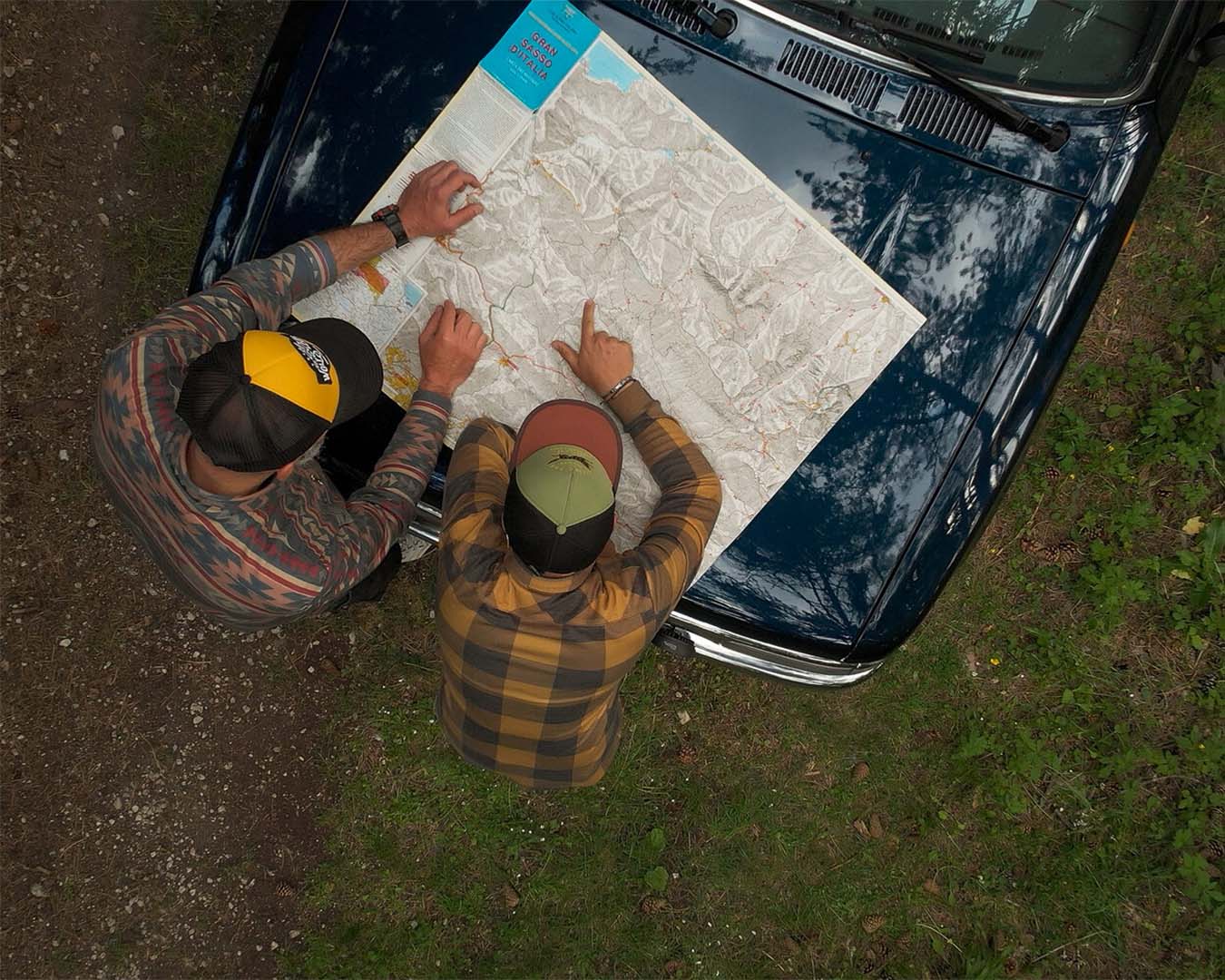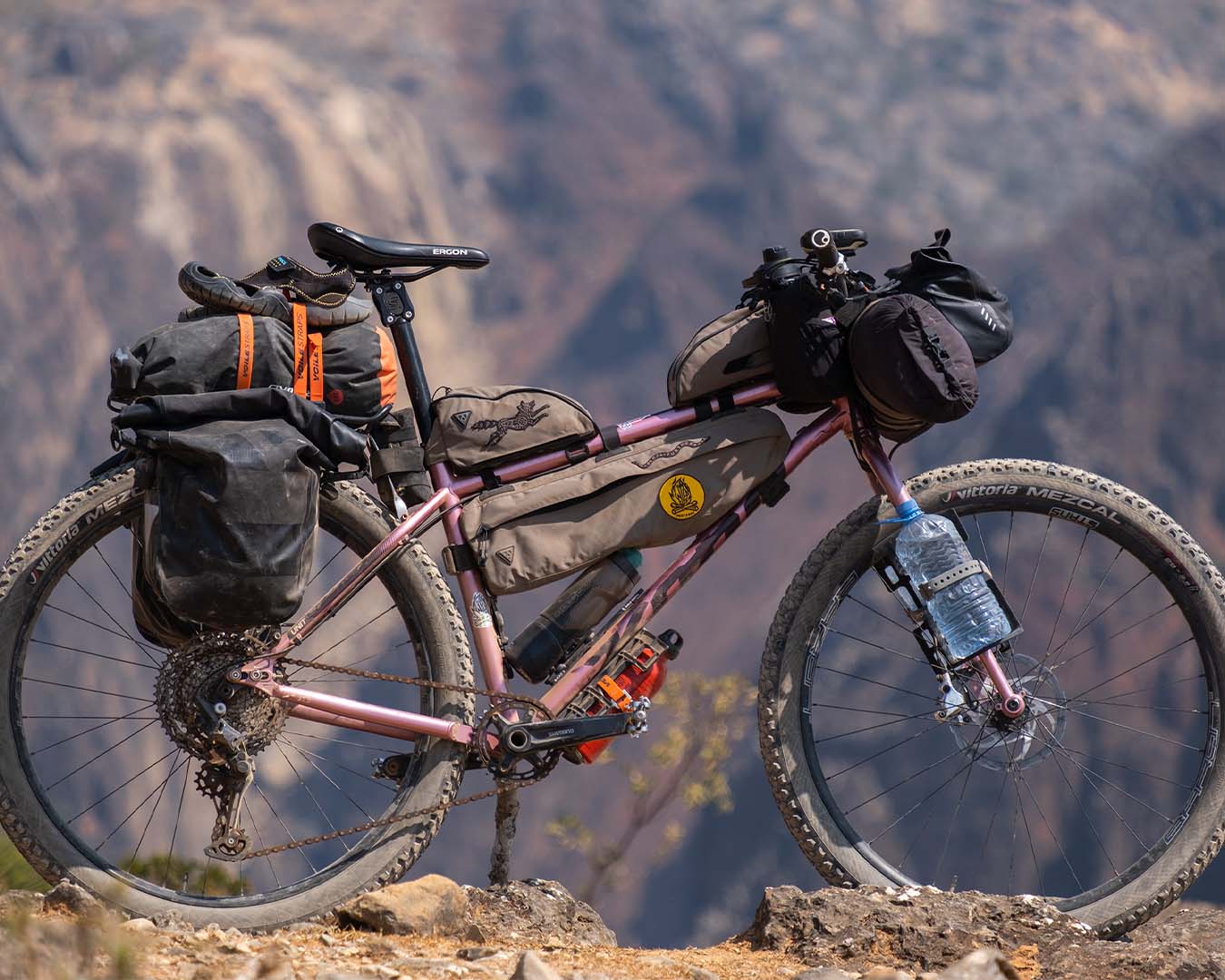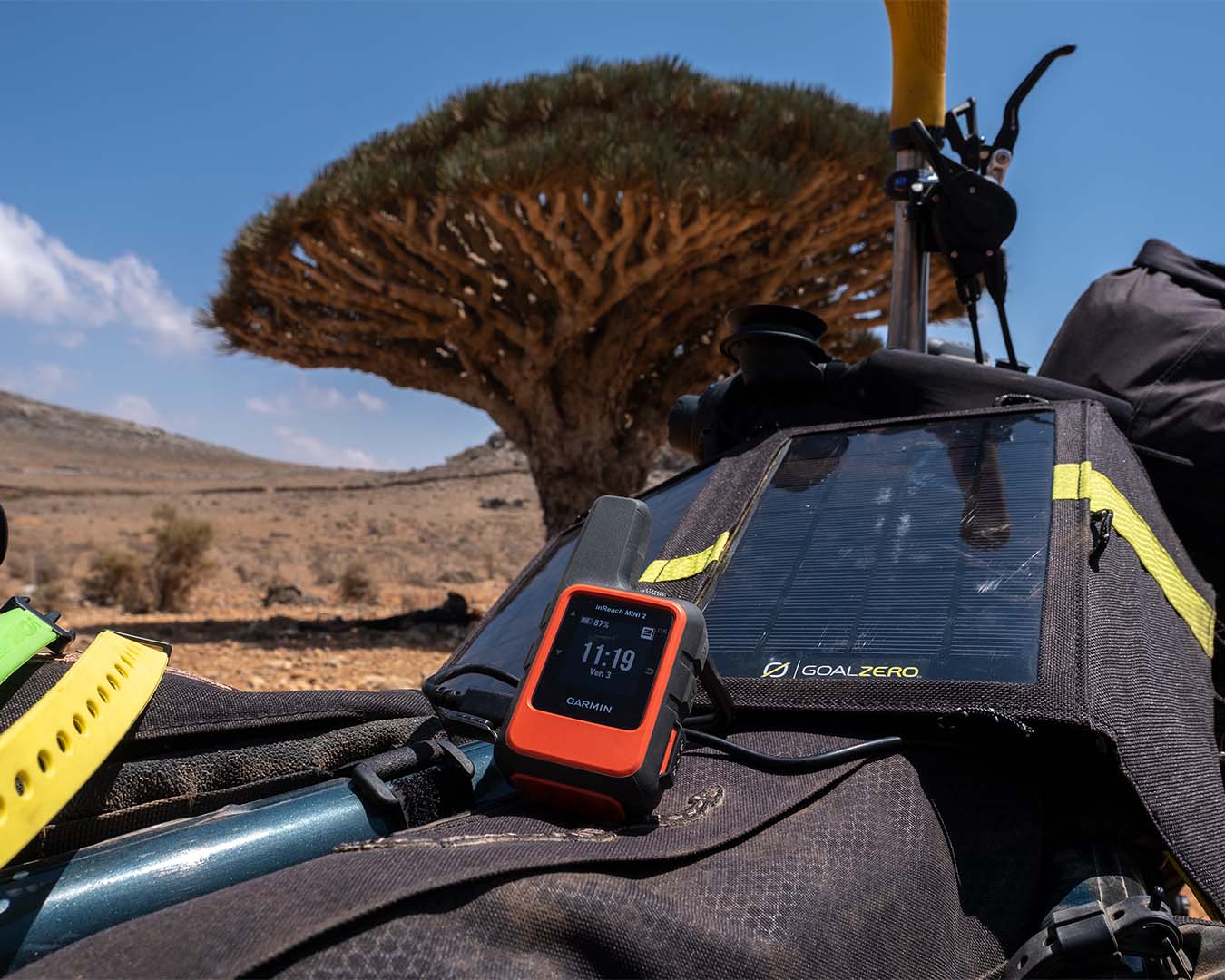choose bikepacking for the next travel
Traveling light, feeling a connection with nature, exploring the world riding a bike is much more.
Back to Basics will make you rekindle the core essence of riding. We’re here to cut out the unnecessary and guide you towards a more fulfilling cycling experience. How? Just focusing on what really matters, the reason that makes you pedaling. Join us as we explore the thousands facets of cycling by sharing essential tips and smart tricks with riders that have a mission, no matter which it may be.
Traveling light, feeling a connection with nature, exploring the world riding a bike is much more. Discover the secrets to have a well-planned bikepacking experience and enjoy every second of your travel.

Riding as traveling. The growing interest towards bikepacking and the increasing numbers of sustainable travel experience are not just temporary trends. These activities can actually be framed into a scenario where a common need is the traveller’s choice to escape from the everyday frenetic pace of life and the corresponding refuge seeking into the natural landscape to breathe and reconnect to the world.
Bikepacking is good for you and the land that hosts you.
Why such a success? Why should we try bikepacking? Because both you and the territory will take advantage of that.
Traveling by bike will make you discover either unexplored worlds or known landscapes with new eyes. Riding allows you to slow down the rhythm and plunge into a dimension of discovery while pedaling, not just when arrived at destination. In other words, it’s an all-round experience where the route doesn’t exist in function of the arrival point, it is actually a key part of the travel experience.
The itinerary, with bikepacking, is the protagonist. The territory that is crossed by pedaling embraces the explorer with all its distinctive elements: the natural landscape and not least, architecture, culture and locals, everything is easily accessible thanks to the bike.
Yes, the bike is a sustainable means that let you visit any place without threatening its environmental balance, plus it’s a zero emission way to travel. The bike will give you, above all, the unique opportunity of crossing the environment and feeling part of it, getting an authentic connection.
The bicycle is not only a sustainable means by which to cross and visit places without compromising the balance and with zero emissions. The bicycle allows people to cross places and be crossed by them.

Schedule your own itinerary and calculate any contingency, thanks to the advice of the guys of Montanus The Wild Side.
“An experience that opened our eyes to extraordinary lands and reconnected us with the wildest nature”
Francesco and Giorgio started nine years ago on a journey that led them to explore wild and remote places, in search of what they call 'the wild side'. Montanus was thus born, a true primordial instinct made up of experiences. “An experience that opened our eyes to extraordinary lands and reconnected us with the wildest nature” says Francesco. Francesco and Giorgio suggest, with a precious five-point guide, the fundamental aspects to study and foresee before approaching bikepacking.
Discover more about them through their last inspiring travel journals in the island of Socotra.
Trace the route
The Itinerary
Once identified the region you’d like to explore, make sure you create an itinerary that is suitable for the participants' level of physical and mental skills.
"The secret is planning... and foreseeing. "

A crucial aspect to be taken into account is the logistics, so make sure you check and organise transfers, especially if the chosen itinerary will be from point A to point B. A loop route (in which the starting point coincides with the finishing point) will make logistical organisation easier. Afterwards, it will be necessary to identify points where food and water can be replenished. "For example," says Francesco, "to cover the 'Iceland Divide', the route we traced to cross Iceland from north to south, we had to be completely autonomous for food, while for water we only took a couple of flasks with us. This was because it was not possible to stock up food along the way, while water was almost always within reach thanks to the many waterways coming from the glaciers.
ready to do anything
The Bike Set-up
The bike will be customised in its technical gear according to specific needs and requirements. With experience, you will learn to customise your set-up from time to time, depending on the specific characteristics of the route.
"The bicycle must be adapted to the route."

The choice of tyres will change depending on the terrain (e.g. sandy, stony or muddy) to be ridden. If water supplies will not be so frequent, it will be necessary to equip the bike to carry a sufficient amount of water.
The same for food, you will travel with a classic set-up or the addition of a rear rack in place of the saddle bag in the case of an upgraded set-up.
The biggest obstacle for the majority of bikepackers. Reducing your luggage to the bare essentials may prove to be an advantage rather than a limit. Travelling minimal requires careful organisation before departure but will allow you, once on the road, to savour a genuine feeling of freedom and lightness.
less is more
The Apparel
When bikepacking, you should choose the appropriate clothing for the weather conditions you will encounter on the trip, being ready to cope with adverse weather conditions.
"Bringing the whole wardrobe will only make your bike heavy: you need to choose carefully what to bring and what to leave at home."

For example, a light, easily packable jacket may be useful when temperatures require it, but it will also be a comfortable pillow for moments of rest when folded into its own bag.
Shoes play a crucial role, as they will be worn for many hours and days. They will need to be comfortable, suitable for heterogeneous weather conditions and, last but not least have a sole that provides excellent grip on the ground. This is because in bikepacking, sometimes you have to push your bike through difficult terrain. A shoe with a Goretex membrane can also guarantee your dry feet in the rain. That is why it is good to carefully choose the most suitable shoes for your next trip in the saddle.
leave nothing to chance
Repair kit, Security and Connections
Bikepacking is based on self-sufficiency, you will not have a mechanic with you. If necessary, you will have to get your hands dirty and try to solve the mechanical problem that has occurred.

Before setting off, make sure you know how to fix at least a puncture (either you have inner tube or tubeless) and how to undo a chain if it breaks. You need a minimum of practice in your garage and a kit that includes at least a multi-tool with a chain-tool, an inner tube, missing link speed chain connectors, a spare gear wire.
Last but not least. It is advisable to carry with you a first aid kit, which will be super useful in case of fall. In the case of a trip to remote places, it will be necessary to add a medicine kit.
If you will travel through areas not covered by a phone network, it is advisable to have a system with satellite coverage, both in case you want to be in touch with people and in case of a call for help.
5 tips from the Rebelside
Ride, Explore, Repeat
"Take a notebook with you in which you can write down emotions, places, names, feelings and everything that crosses through your mind during those long hours in the saddle."

And during the trip? We asked two top explorers what tips they learned in the field to make the most of a day's riding. Giulia and Simona, share their bikepacking adventures in the Rebelside project. Don't miss their travelogue through Andalusia and be inspired by the wild scenery and unmistakable colours of the barren lands of the Andalusian deserts.
For adventurous but organised bikepacking, take note of Rebelside's tips. Here are five tips for enjoying every moment of your day in the saddle:
1. Start your day early in the morning, perhaps at the crack of dawn, to savour the sunrise, enjoy the morning coolness and have more daylight hours available for cycling during the day.
2. Organise stops at villages or towns encountered along the way to refresh yourself, refuel (with water and something to eat to take with you) and, why not, browse through the alleys and old towns you pass through.
3. always have snacks with you (dried fruit is ideal) and perhaps take micro snacks every two hours (or perhaps before a climb) to recharge your batteries and replenish your energy expenditure.
4. keep a powerbank handy to recharge devices (phone, gps, etc.) that always run out of power at the best of times.
5. take your time to enjoy the views, stop to take photos, be enchanted by a panorama.


